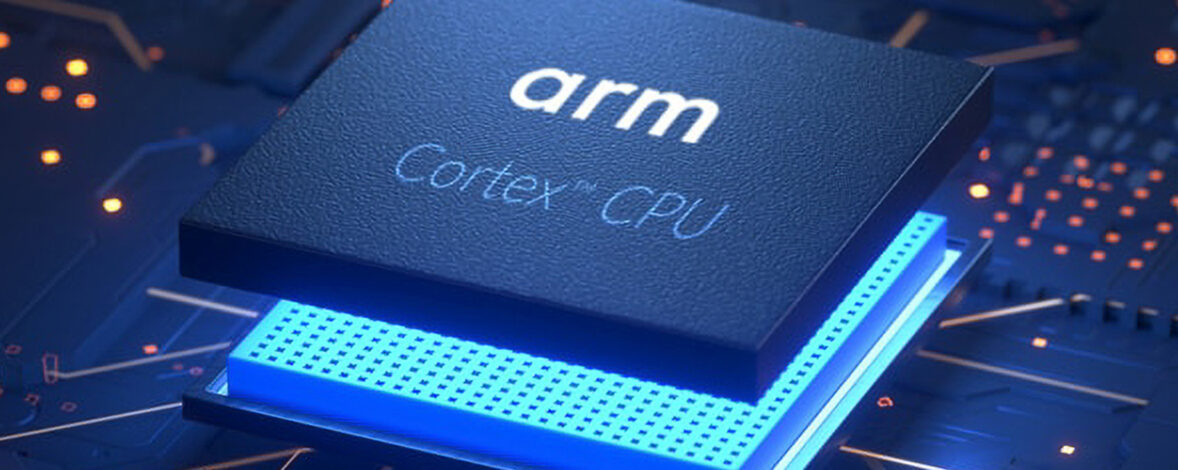Arm automotive solutions emerging as the standard
Arm has been all over the news, especially given their blockbuster IPO of the company in September 2023. The reason for their success is how pervasive Arm technology has become in nearly every industry that uses electronics. The automotive market is a great example: nearly every industry-leading silicon vendor is using Arm automotive compute components in their line-ups, and most are shifting to an all-Arm based roadmap inside their hardware.
Arm enables automotive silicon providers to deliver critical capabilities like high performance with energy efficiency, security, support for safety-critical and mixed-criticality systems, and an open standards-based ecosystem including initiatives like SOAFEE. Every day, more vehicles, including cars and trucks of all shapes and sizes, are being delivered with Arm technology and it is becoming pervasive across every automotive subsystem.
Sonatus in production on top of Arm automotive silicon
Sonatus software in production today is running on a range of Arm-based automotive silicon from many providers and new production deployments coming soon are also based on Arm. We have a close collaboration with Arm-based hardware providers like NXP, Marvell, Realtek, Broadcom, Renesas, Micron, ST Micro and more.
I am proud to have worked at Arm for over 14 years and have great respect for what Arm has accomplished in the automotive market. In this blog I’ll describe some of the many benefits of Arm in automotive that provide a perfect complement to Sonatus to accelerate automotive development.
Low power matters in automotive
When one thinks of a car, one might see them as a physically large device with lots of power storage and power generation capability where energy is abundant. It might initially seem unnecessary for automotive to use Arm, which is known for its energy efficiency. In fact, the reality is that energy efficiency actually matters a great deal in automotive and there are two reasons why.

First, with electric vehicles, energy efficiency directly translates into range as there is no ongoing energy generation by-product of burning gasoline. Improving vehicle range will be critical for the continued adoption of EVs. Second, automotive systems are typically compact, delivered in sealed units to provide weatherproofing. For both reasons, energy efficiency enables a simpler thermal cooling solution, reducing weight and physical size of those units.
Automotive performance needs are growing
Paradoxically, despite the need for low power consumption, automotive software is demanding higher and higher compute performance. This is where the magic of Arm really shines, because Arm is not delivering low power through low performance, but rather is delivering high performance that is also energy-efficient.
Proven efficiency from data centers
Arm has proven this efficiency in data centers, Arm-based chips with server-class performance deliver >40% more energy efficiency than comparable Intel-based solutions. Server-grade hardware based on Arm from vendors such as AWS and Ampere are in production today, and growing in adoption across the market and deployed at many server and cloud vendors.

Benefits of Arm for the automotive market
Those same benefits extend to implementing the software-defined vehicle, where Arm-based chips bring incredible top-end performance that enables high performance domain controllers and central compute capabilities, but efficiently. Whether for private vehicles with increased driver assistance (ADAS) requirements, or for current or future edge robotaxis with self-driving capabilities, a brute-force approach of filling the trunk with a rack of high power servers will not get the job done in automotive. That’s why Arm is being adopted for next generation high performance in-vehicle applications and will accelerate development of future vehicle innovation.
Diverse solutions from high performance to deeply embedded
One of the most powerful aspects of Arm’s architecture is the line-up hidden right in the name: A-R-M. The Arm Cortex family of processors contains three main subsets that share a common processor architecture and compatible instruction sets, which serve a broad range of capabilities and needs. Industry leaders across the silicon landscape choose from among these cores to solve their diverse automotive use cases.
Cortex-A cores for Application Processing
The “A” cores from the Cortex-A family for application processing get the most attention, as these cores run the application workloads on phones, data centers, or the high performance compute in vehicles. Cortex-A cores have been widely deployed in automotive in-vehicle infotainment or navigation systems but are increasingly being spread to provide high performance compute for autonomous driving and ADAS.
Cortex-R cores for Real-time Processing
Perhaps less well known, but crucial for automotive and other real-time applications like hard disk and safety-critical systems, are the “R” cores from the Cortex-R family that focus on real-time processing. Increasingly, these cores are being used to deliver functional safety features inside vehicles. Some of the most innovative Arm-based silicon solutions from the automotive sector, such as from NXP, are putting Cortex-R cores alongside Cortex-A cores on the same chip, to allow safety systems and application processing use cases to live side by side.
Cortex-M cores for Embedded and Microcontrollers
Finally, there are myriad microcontroller applications both inside complex chips and also in standalone low power sensors that are well served by the “M” cores from the “Cortex-M” family of microcontroller processors. Having such a diverse lineup that shares compatibility is critical to improve developer expertise and throughput, while also enabling a range of processors suited to solve problems with different needs.
Adapting to the needs of Automotive: Arm AE cores
Their latest-generation Arm AE cores are specifically designed to address the fault tolerance required for vehicles, providing the ability to flexibly choose to run cores in lock-step mode, for example, for mission-critical applications. These special market-specific variants bring new technology that can offer additional specialty capabilities for arm automotive applications.
Rich ecosystem and standards
Arm’s longevity also comes from its longstanding commitment to a diverse ecosystem and supporting the needs of software developers. Myriad complementary companies from EDA providers, software development tools, debugging, security, and other solutions make developing on Arm a smooth process. Additionally, Arm develops and complies with key technology standards that promote system interoperability on-chip of wide-ranging peripherals whether for deeply embedded applications or high bandwidth interfaces for leading-edge compute.
SOAFEE: Scalable Open Architecture for the Embedded Edge
Arm also leads when it comes to collaboration, including initiatives like SOAFEE, or Scalable Open Architecture for the Embedded Edge. SOAFEE aims to bring modern cloud-native development practices to automotive, including extending technology standards like containers and other middleware to be compatible with the mixed-criticality present in automotive applications. Sonatus is a member of SOAFEE, especially to support the goal to bring modern cloud-native development practices for software-defined vehicles. Cloud solutions from vendors like AWS are demonstrating how virtual prototypes in the cloud can enable companies to develop software in the cloud and deploy into automotive. If we hope to bring scale to vehicle software, speed development cycles, and improve safety, virtual platforms are critical to delivering the validated configurations the industry demands.
Our products, such as Sonatus Foundation are compatible with SOAFEE and build on the same kinds of industry standards advocated by that group. Sonatus also uses virtual platforms for our own testing in-house and products like Sonatus Foundation can help the deployment of new software into automotive.
Arm and Sonatus in The Garage
If you’d like to hear more about Arm in automotive, I recently spoke with my good friend from Arm, Robert Day, who is Director of Automotive Go-to-Market for North America, in an episode of The Garage Podcast by Sonatus. You can find the podcast in our Resource Library on YouTube or on Spotify or Apple Podcasts. Subscribe here to Sonatus’ YouTube Channel to be notified of future episodes.


